Easy to make homemade gluten free flour blend – perfect for baking cookies, muffins, cakes, and more.
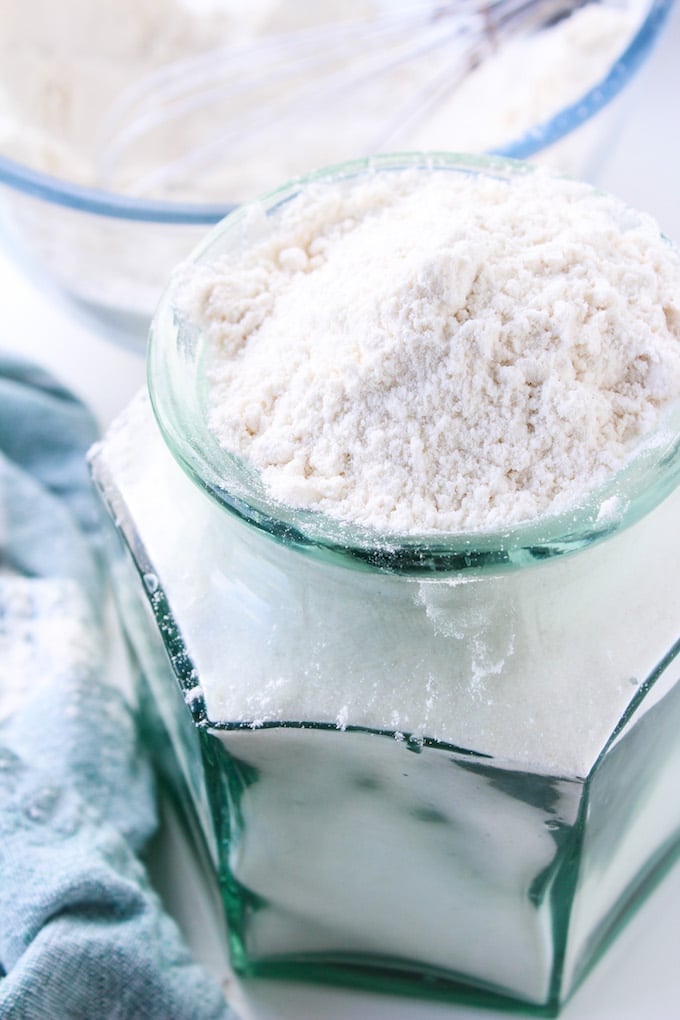
I distinctly remember one particular conversation I had with a friend of mine several years ago. Her dad was going through a few health issues and needed to get tested for a number of things – one of them to rule out Coeliac Disease. Our conversation went a little something like this….
Me: Wait. What’s Coeliac Disease again?
My friend: I think it’s when you’re allergic to gluten – like in bread and pasta.
Me: Oh wow, that would be horrible. I could never do that. I’d miss pizza and bread too much. I’d be so skinny though.
Man, I can be such an idiot.
I also used to say that dating people you meet online is weird and I would never do it because there’s no way you could really get to know a person without being in their actual presence. Ha!
So naturally, here I am. Years later I’m married and living in a new country with the love of my life, a man I met online. The first time we met in person was after 10 months of getting to know each other via Skype chats and Facetime calls. By the time he was finally able to make the journey from England to Arizona, being together felt like the most natural thing in the world.
And it’s because of this man that I now have this gluten free food blog, dedicated to spreading awareness about Coeliac Disease and proving that a life without gluten is every bit as tasty as one without is….just without as many dining out options.
Life has a funny way of putting me in my place.
Also, eating gluten free definitely does not make you skinny.
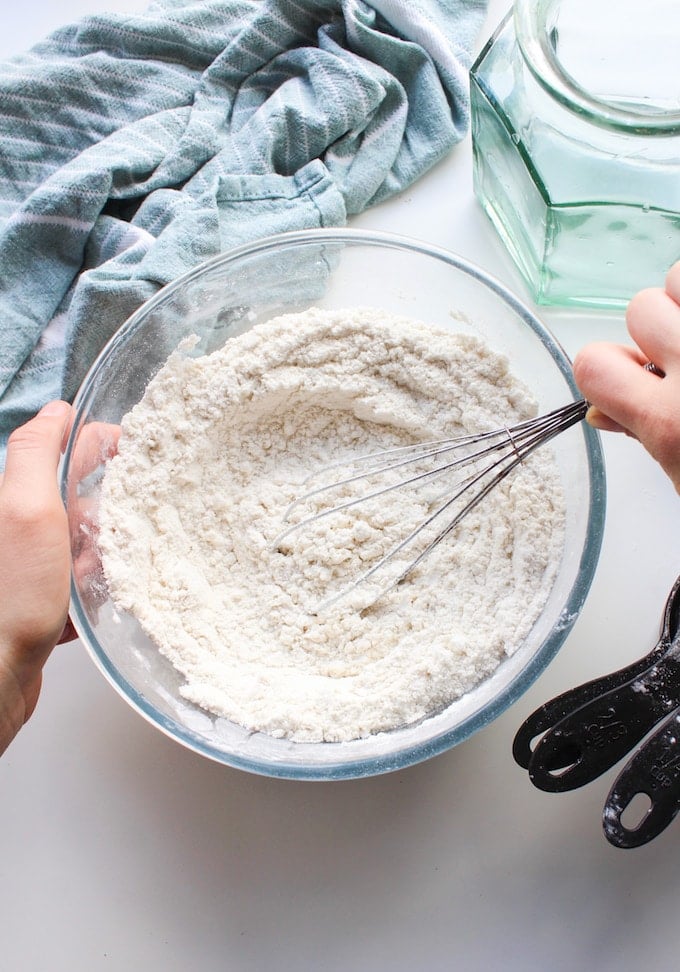
Gluten Free Baking
I think when most people learn that they or a loved one have to give up gluten, it comes as a huge loss – and with reason. Here’s this thing called gluten and it’s everywhere. It’s more than likely a key ingredient in some of your favorite foods: bread, pizza, pasta, cookies, bagels….It’s almost literally in e v e r y t h i n g that isn’t a fruit or vegetable. Hell, it’s even used a filler in a lot of meat products. Giving up gluten for the average person means radically changing not only your diet, but your lifestyle. In summary: it sucks.
As someone who has loved baking for as long as I can remember, learning to bake gluten free has been….a process. It’s been a long, expensive, frustrating, but ultimately rewarding process.
If there is one thing to keep in mind with gluten free baking is that you need to have patience let go of your expectations. There are so many rules of baking that no long apply once you throw gluten out of the window and new rules to come and take their place.
For example, there’s no need to worry about mixing gluten free bread dough because there’s no gluten to over work. In fact, beating your cake batter for an additional 2-3 minutes is probably even a good idea because it adds air to the batter which allows for better rising.
Gluten Free Flour Blend
For this particular recipe I strongly recommend you do yourself a favor and invest in a kitchen scale. Because this blend will be used as an all purpose 1:1 substitute for gluten containing all purpose flour, it’s important that your measurements are accurate to begin with. If you still want to measure out the flour using cups then make sure to pack the flour into each cup and level off the top. When I measured and weighed my flours this way I was able to get within 5 grams each time.
Things to keep in mind about this gluten free flour blend
Make sure that you use potato starch and not potato flour. Potato starch will provide you with light, fluffy baked goods. The latter will break your teeth. However, tapioca starch and tapioca flour are actually the same thing so either label is fine for that one.
Make sure to check and double check that the flours you’re buying are free from cross contamination. Few things are more frustrating than when you buy flours for a gluten free flour blend only to realize that they are processed in a facility that handles wheat.
Finally, make sure that you take your time to blend all the flours together properly. Spend a couple of minutes whisking everything together, shake the flours around in a jar, and/or put everything in a food processor/ blender and go to town.
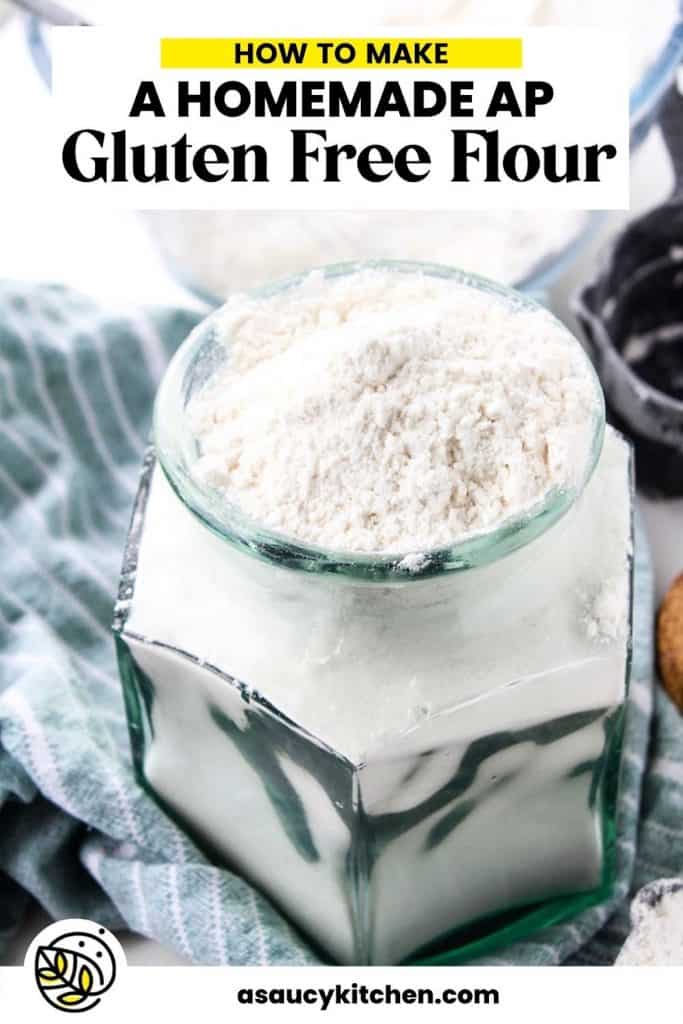
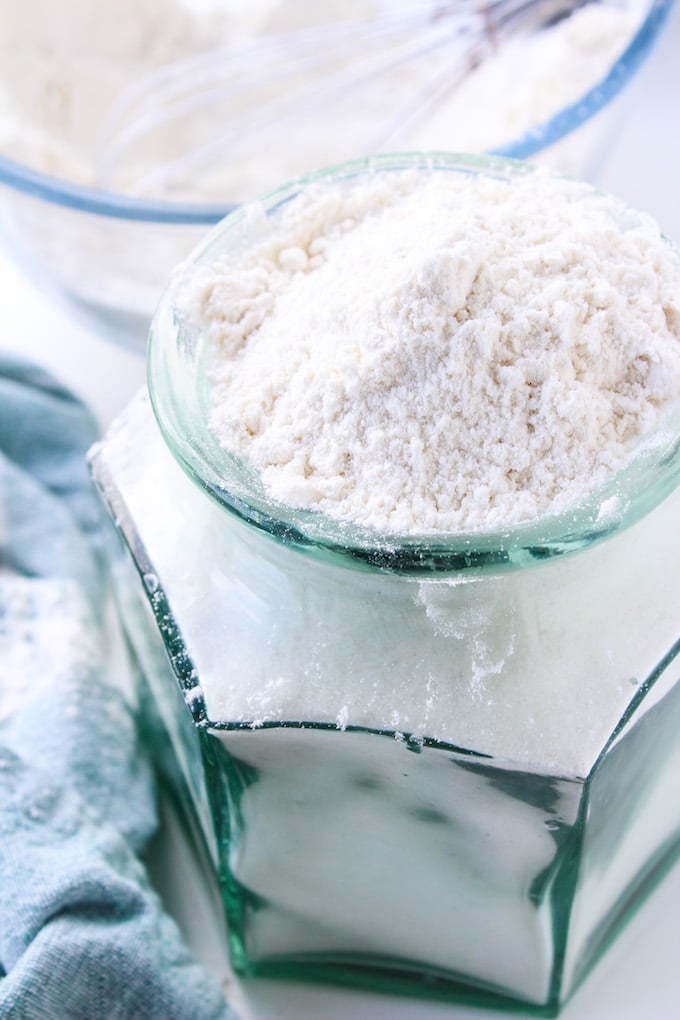
Homemade Gluten Free Flour Blend
Easy to make homemade gluten free flour blend - perfect for baking cookies, muffins, cakes, and more
Ingredients
- 1 1/4 cups White Rice Flour 180 grams
- 3/4 cups Brown Rice Flour |120 grams
- 2/3 cup Potato Starch | 112 grams
- 1/3 cup Tapioca Starch | 42 grams
Instructions
- Add all your flours to a bowl and whisk together. Take the time to fully blend everything together evenly. You can also toss your flours to a blender/food processor to blend.
- Store in an airtight jar/container.
Notes
Adapted from Land O Lakes Makes about 3 cups, can easily be multiplied
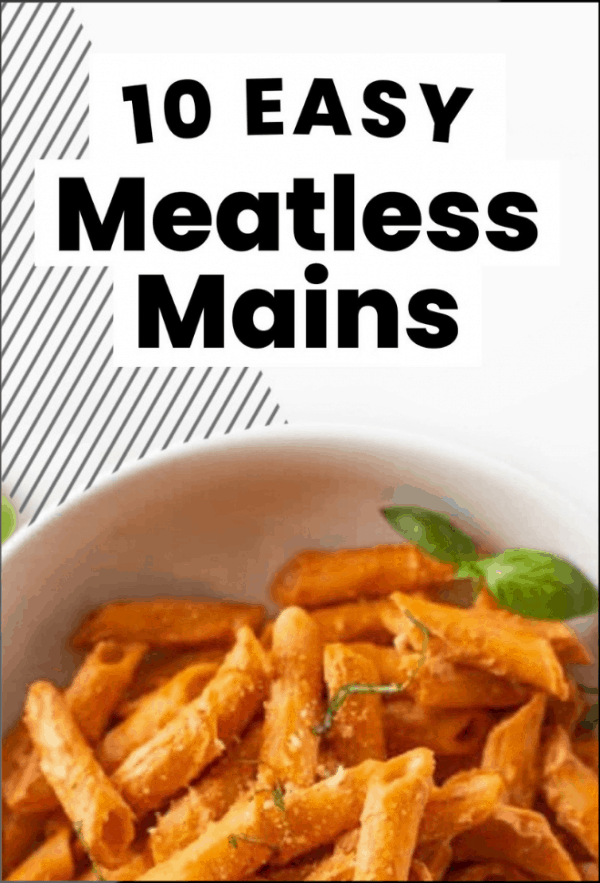
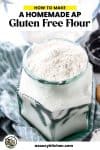
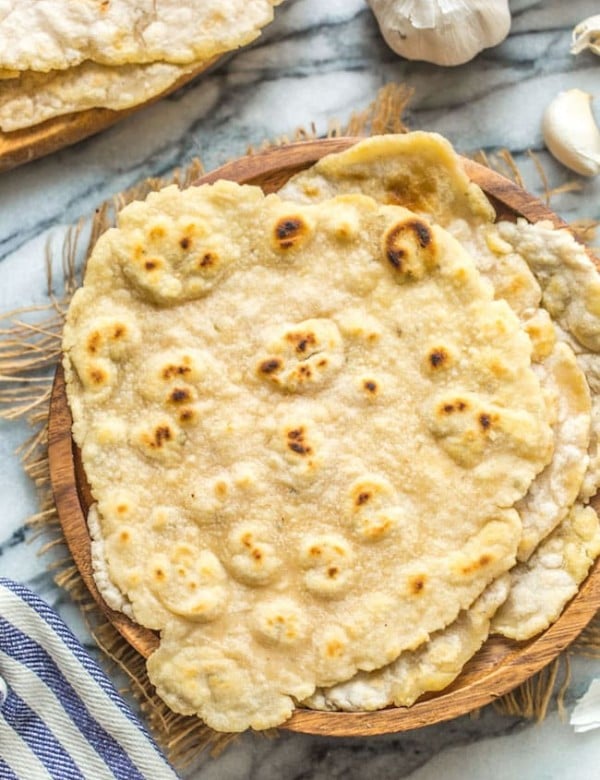
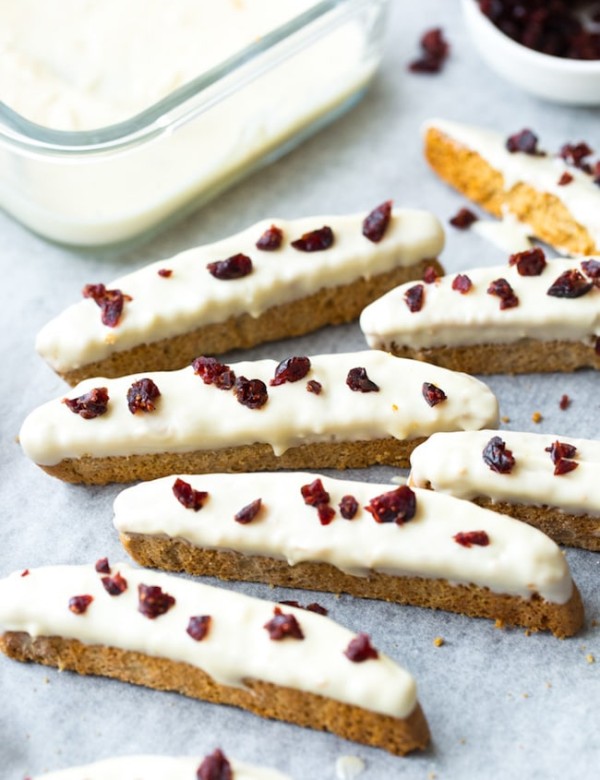
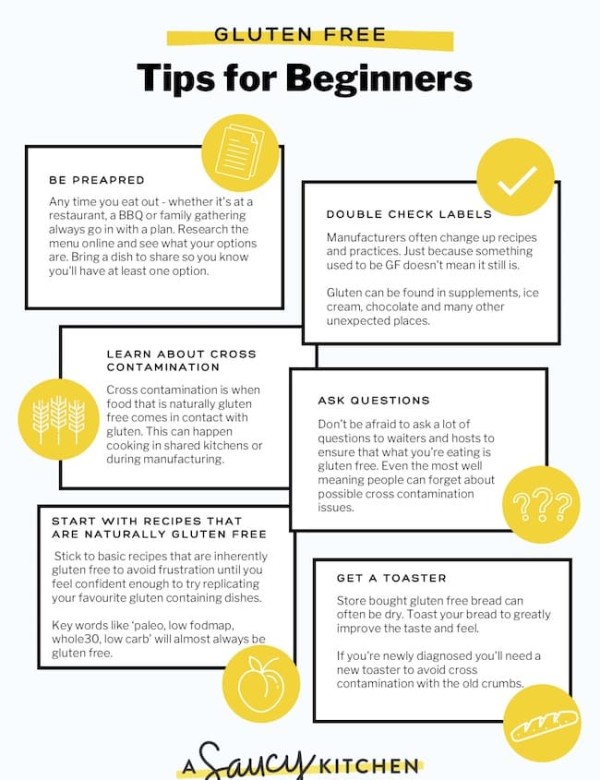
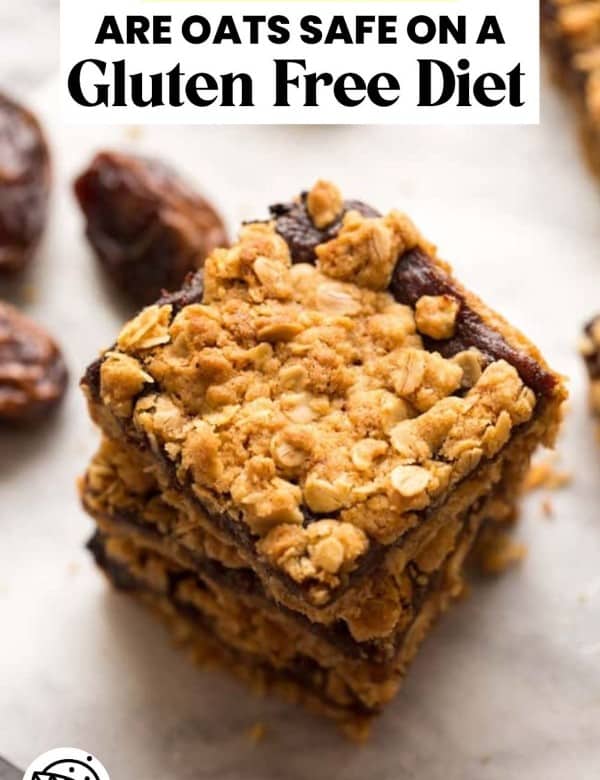
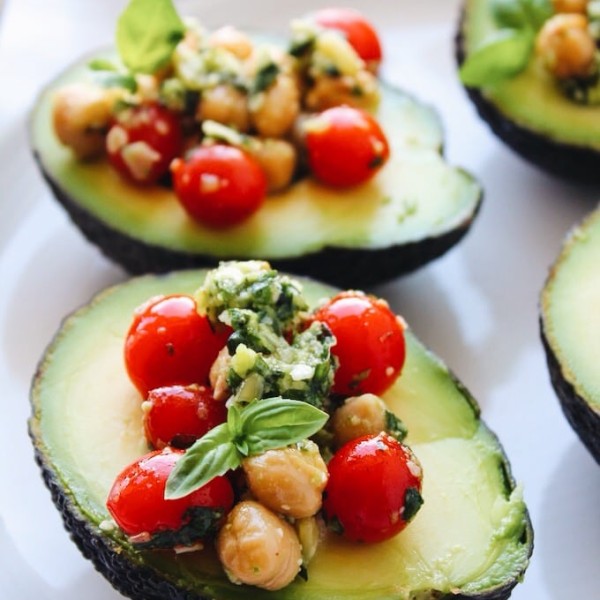
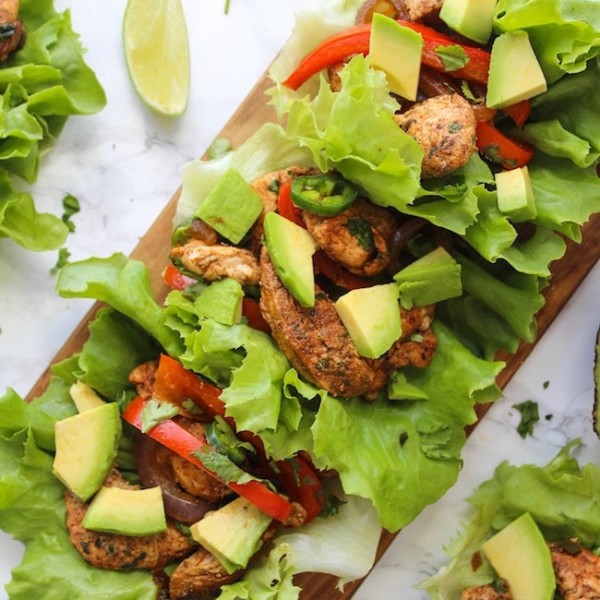
Joan Lisa Killey says
I would like to try your recipe as my husband cannot have gluten.
The problem is that I cannot have any kind of soy product or chemical product as I have a sensitivity to chemicals in food.
You use xanthum gum in cakes which I cannot have as it is soy based, is there anything else you could suggest that is not a chemical or soy based product?
Sarah Nevins says
Hi Joan – sorry for taking a while to get back to you! Your comment just got stuck in my spam filter. Have you ever tried using ground up chia seeds or flax seeds in place of xanthan? Those two can often be used to help bind. The rule of thumb when using chia or flax is 1 teaspoon per cup of flour used. It’s not as strong as xanthan and it won’t always work, but it’s a good option if you can’t use xanthan or guar gum. Hope that helps!
Jo says
Hi Sarah! I am making crispy mushroom. Can I use this flour instead of my usual all purpose flour?
Sarah Nevins says
Totally! Those sound good too by the way!
Yee says
Hi,can this gluten free flour make cake without xantam gum?
Sarah Nevins says
Hi Yee! Just to be on the safe side I’d recommend adding 1/4 teaspoon xanthan gum per cup of flour if you want to bake a cake.
Diane says
How much xanthan gum do you use per cup/grams of this mix for cakes, etc? I’ve used a few of your recipes – great! 🙂
Sarah Nevins says
Hi Diane! As a rule of thumb I usually add 1 tsp xanthan per cup of flour
Damian says
I simply wish to make the most basic of bread. Will Cassava (Yuka) flour be a workable substitute for wheat and other grain flours.
Would Oat flour or Corn flour also ‘work’?
Sarah Nevins says
Hi Damian! It’s hard to say what will work for a gluten free bread without having a recipe to go off of. I do however, have a couple of GF bread recipes that might help you out. Both of my bread recipes use a blend of rice and tapioca flour. Standard bread: https://www.asaucykitchen.com/easy-gluten-free-french-bread/ the egg free version: https://www.asaucykitchen.com/gluten-free-vegan-french-bread/
I find cassava flour great for flatbreads (like this one: https://www.asaucykitchen.com/gluten-free-flatbread/) but tricky in bread loaves as it can be a pretty dense flour.
Jen says
The absolute best blend I have used in last several years! Weighing it does make it more accurate, but it is pretty close if you don’t have access to a scale. I’m sharing it with everybody I know who is gf!
Sarah Nevins says
Yay! Thanks Jen – that makes me so happy to hear!
Beth says
Often xantham gum is made from wheat and or corn derivatives. Being a Celiac for 35 years I have found that Guar gum is actually an excellent substitute for xantham . Use a teaspoon of Guar gum per cup of flour. In addition many baking powder products also used wheat, aramath , sorghum, corn derivatives. After switching to 1/2 teaspoon of cream of tartar and 1/4 teaspoon of baking soda….you might find the source of your husbands gastritis .
Sarah Nevins says
Hi Beth! Thanks for the tips! Fortunately we’re able to find certified gluten free baking powder and xanthan gum where we live, but it’s a good thing to remind people of when they buy it. It’s crazy how many everyday food items contain gluten!
Fortunately Mike’s gastritis has passed now. He had a bad ear infection awhile back and the doctor put him on strong antibiotics that completely tore his stomach up. He went from a fairly normal (gluten free) diet to only tolerating plain chicken breast right on the back of the antibiotics. He was thankfully able to get a prescription for a good probiotic (VSL#3) and that set him right again.
Paul says
Hi Sarah, thanks for sharing your hard-earned knowledge with us all. Have you any understanding or opinion about the role that brown and white rice flour play in the dynamics of the baking process? I see that your recipe here calls for more white than brown, but I’m wondering what would be different to the outcome if you were to reverse the ratio to contain more brown than white?
Regards,
Paul
Sarah says
Hi Paul!
Typically brown rice flour makes baked goods a little heavier feeling than white rice flour. That being said, I don’t think it will actually be that noticeable here if you’re just switching the amount of brown and white flour. You might also notice a slightly sweeter/nuttier taste if you use primarily brown rice flour which can be quite nice.
So basically, using primarily brown rice flour here might make for a slightly denser, sweeter bread but will still work and come out well. Hope that helps!
CA says
Is there something I can use instead of the potato starch? I’m not supposed to eat potatoes.
Sarah says
I haven’t tried it like this but you could try using more tapioca starch or arrowroot starch in place of the potato starch
Jessaca says
How would you make a yellow sheet cake recipe using this flour? What other ingredients do you need?
Sarah says
Hi Jessaca! I don’t have a particular sheet cake recipe I use but you might like this one http://theheritagecook.com/tender-yellow-cake-with-fudge-frosting-gluten-free/